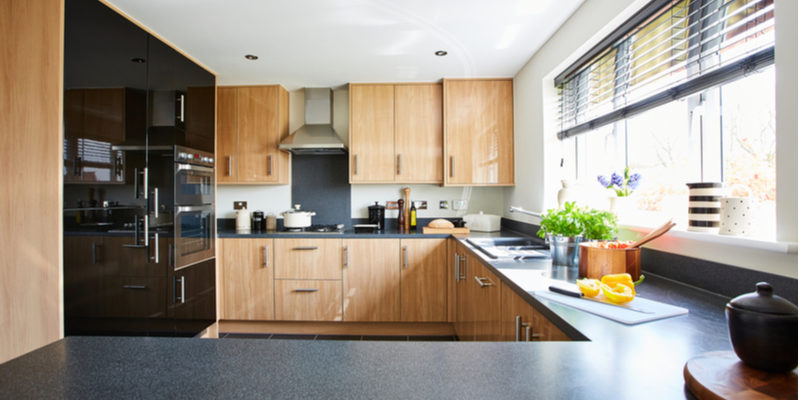When choosing and purchasing your kitchen cabinetry, the choices often seem limitless. The material you choose will not only affect the beauty of your kitchen but also the durability and longevity of your design. Each material has advantages and disadvantages, but wood remains a preferred choice among homeowners and builders. Wood comes in a wide variety of finishes, styles, and even species, allowing you nearly infinite options for design as well as budget. Let’s explore the benefits, including the advantages and disadvantages of solid wood cabinetry.
The Benefits of Wood Cabinetry
Wood offers a unique character unmatched by other cabinet materials. With color and grain variations, kitchen style can be further personalized with paint or stain. Paint does hide grain variations but permits homeowners to customize their design choices. Stain, on the other hand, allows for a distinctive showcase of wood grain patterns. Unlike engineered wood, thermofoil, and laminate, which offer their own unique benefits, real wood is the only option when you want to display natural appearance and grain variations in your kitchen design.
Wood kitchen cabinets offer a number of advantages including durability and longevity. Plus, wood cabinetry is easier to repair when compared to cabinets made from other materials. For example, simple repairs, such as surface scratches, can be performed easily with only wood filler wax sticks. Wood cabinetry offers unmatched versatility given the species, colors, styles, and finishes from which to choose, plus you also gain the ability to personalize your cabinetry with paint or stain. Wood cabinetry also allows homeowners the ability to mix or match finishes to create a uniquely personal kitchen remodel style. Wood also lends itself to change, when the need or desire arises, as wood cabinetry is the easiest material to reface, re-stain, or re-paint for a completely new look.
The Drawbacks of Wood Cabinetry
Wood cabinets tend to be more expensive than other cabinetry materials, plus, the rarer the wood, the more costly it will be. Costs can make the quality, versatility, and durability of wood a deterrent to your budget. Custom or semi-custom cabinets designed in wood require a longer time to construct and install, so choosing wood means more lead time.
Wood cabinets are also effected by humidity. If the moisture content in your region’s climate is continually changing, your wood cabinets may expand and contract causing warping if not properly treated during construction and installation. Wood cabinetry also requires more maintenance than other materials, including special products designed for cleaning, thus increased maintenance costs.
Wood Cabinetry – The Ideal Choice for Your Kitchen
Wood cabinets strike an ideal balance of great looks, perfect style, and enhanced durability in the kitchen. Wood has the ability to withstand everyday use in the kitchen and offers many popular styles from which to choose. The most popular woods for kitchen cabinets include:
- Maple with lighter tones and consistent colors is an ideal choice for those wanting to paint their wood cabinetry.
- Oak features natural knots and well-defined grain streaks in light to medium wood tones making it the perfect choice for stained cabinetry.
- Cherry is among the most durable options for wood cabinetry and is available with or without knots and darker hues.
- Hickory is both durable and beautiful and offers a unique defined grain making it popular among homeowners who want to create a unique kitchen design.
Keep in mind, wood cabinetry brings versatility, durability, and longevity to your kitchen design, making it a timeless choice for kitchen design for homeowners. Wood also offers a wide range of finishes and styles, making the options limitless.

